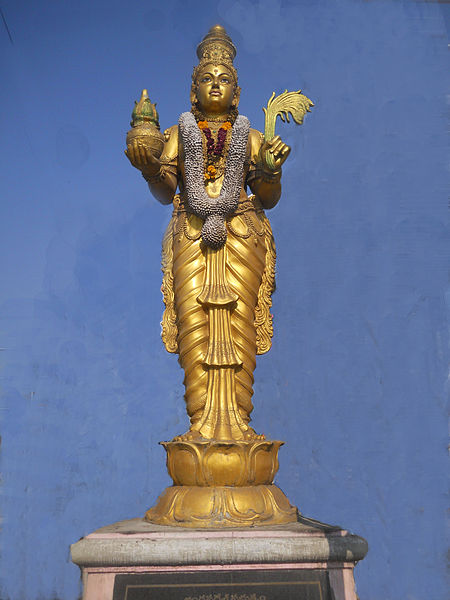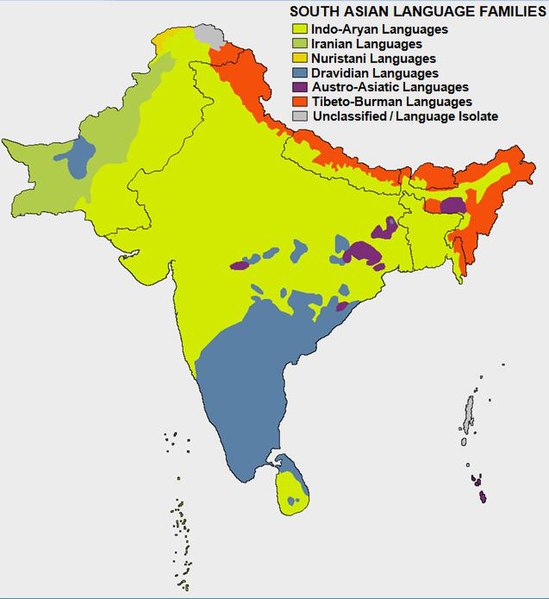Telugu is a Dravidian language native to the Indian states of Andhra Pradesh and Telangana, where it is also the official language. Spoken by about 96 million people (2022), Telugu is the most widely spoken member of the Dravidian language family, and one of the twenty-two scheduled languages of the Republic of India. It is one of the few languages that has primary official status in more than one Indian state, alongside Hindi and Bengali. Telugu is one of the six languages designated as a classical language by the Government of India. It is the 14th most spoken native language in the world.
Telugu Talli Bomma (statue of Mother Telugu), the personification of Telugu language in Andhra Pradesh
Wall painting at a shop in India. It first shows the painted party symbols of all the major political parties in the region during the nationwide elections in India in 2014. It also has a Telugu inscription showing availability of political flags, banners, caps, badges and other election material.
A depiction of the Amaravati Stupa
Ancient Telugu Writing displayed at Telugu Museum
The Dravidian languages are a family of languages spoken by 250 million people, mainly in southern India, north-east Sri Lanka, south-west Pakistan and some regions of Nepal.
Dravidian is first attested in the 2nd century BCE, as inscriptions in Tamil-Brahmi script on cave walls in the Madurai and Tirunelveli districts of Tamil Nadu.
Language families in South Asia
The oldest known Tamil-Brahmi inscription, near Mangulam in Madurai district






